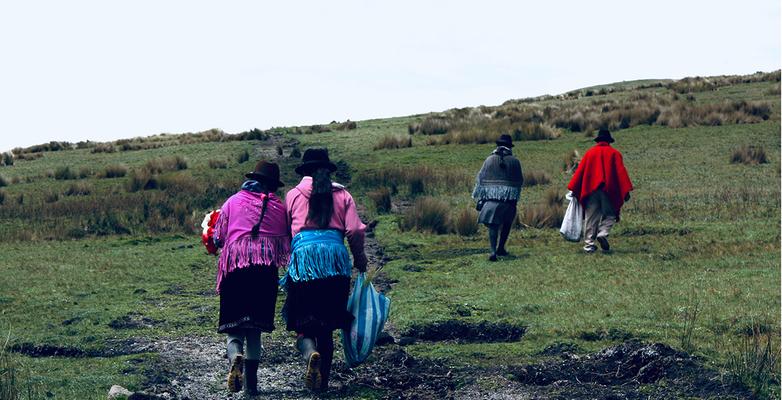
How Indigenous Knowledge Can Help Us Combat Climate Change
In mainstream Western culture, Indigenous peoples are often seen as stewards and custodians of the environment. With an estimated worldwide population of 370 million across 70 countries, each group possesses different histories, cultures, and traditions. So, with such an incredibly diverse makeup, where does this association come from?
In part, this association comes from the knowledge that many Indigenous communities have developed through centuries of interaction with their surrounding environments. And that knowledge can be a hugely beneficial when it comes to climate change mitigation and adaptation.
The Indigenous Perspective of Nature
With our national parks and nature reserves, many countries have reinforced the concept of a pristine “wilderness” that is nature untouched by and separate from humans. This anthropocentric, or human-centered, view of the environment has been dominant in the West in particular for the past few centuries and led to the incredible exploitation and depletion of natural resources from wood to water.
Which begs the question: How do we protect something we don’t see ourselves as a part of?
Numerous Indigenous peoples have a completely different perspective of nature, seeing the natural elements around them as kin and as living conscious beings.
For instance, the Dulabed and Malanbarra Yidinji peoples, who reside in Australia, refer to the river nearby the community as “him” rather than “it.” Because the river gives life to the people, plants, and animals that live beside him, community members believe that the river system has rights and humans are obliged to treat him with honor and respect.
Similar beliefs are held by various Indigenous peoples across the globe.
Though differences in beliefs exist, Native Americans generally view the environment as inseparable from human development and wellbeing. Where European settlers considered to be “wilderness”, the Native Americans saw a community teeming with living beings, of which humans are just one part. This worldview explains why much of Native American cultures and identities are based on the land and environment.
Ecosystem Management Done Right
Mutual respect and caring for the Earth’s natural systems naturally lends itself to sustainable resource and land management practices we typically associate with Indigenous peoples. Although they only make up 5% of the world population, Indigenous peoples protect 80% of global biodiversity.
But preserving biodiversity isn’t the only place Indigenous populations can help the world.
Take, for example, the increasingly frequent and severe wildfires in California that make headlines every summer. Climate change is a major factor, but so is poor forest management. That’s because the state of California (and the rest of the United States) had largely banned one of the most effective forest management practices: low-intensity fires.
Without these regular, controlled burns that Native Americans have prescribed to forests for centuries, forests grow thick with vegetation and dry out in the summer as the climate warms. This creates kindling for wildfires to spread out of control, which unsurprisingly, also disproportionately affect Indigenous communities.
In recent years, California seems to have come around on prescribed burns. The state government has even been working with Native tribes to use this traditional practice to help mitigate fires. That’s good news and all, but we can’t forget that when the government imposed these bans and stripped Native tribes of their land, they lost a large part of their culture.
We have to keep in mind that to recognize and utilize Indigenous land and resource management practices means that we have to grapple with the history of harm the government inflicted on these communities. This can start with supporting land return and Indigenous sovereignty over their lands.
The Need for Indigenous Voices in Climate Change Discussions
More and more, the climate movement is recognizing that Indigenous knowledge on climate change mitigation and adaptation can benefit the world. Even the IPCC said so.
Despite the valuable knowledge they possess, Indigenous communities, who are also some of the most vulnerable to the impacts of climate change, have largely been left out of formal discussions on these topics.
The role Indigenous peoples play in preventing deforestation and land degradation has long been ignored. Case in point: the discussions for the post-2020 Global Biodiversity Framework. One key target of the framework calls to double protected areas to 30% globally. While this sounds like a good thing, how do these policies actually affect Indigenous and local communities?
Studies have also shown that deforestation rates are lower in forests that Indigenous peoples manage and control than in protected areas where strict conservation is enforced. In fact, protected areas can be harmful to Indigenous communities, as they’ve historically pushed Indigenous peoples off of their land. The same land that they depend on for their food, livelihoods, and cultural identities.
While Indigenous rights have been increasingly recognized at the international level, they’re not always respected on the national level. To successfully combat climate change and achieve climate justice, Indigenous peoples must be part of the conversation and the action at all levels of the government.
To stay connected to the movement for climate solutions, sign up for our email activist list.

